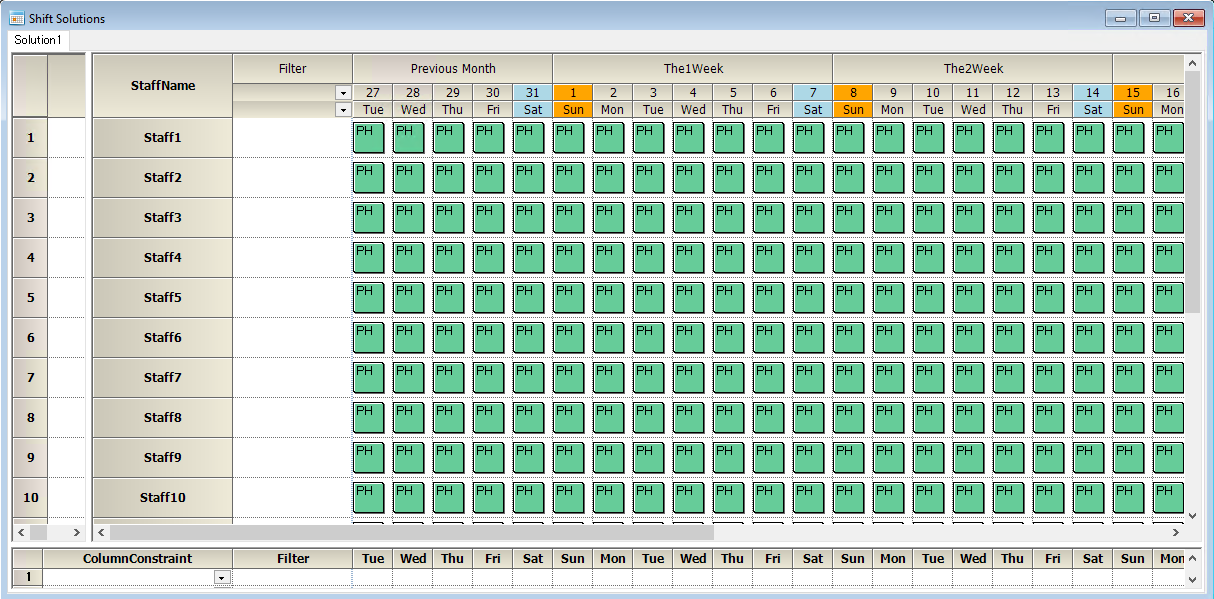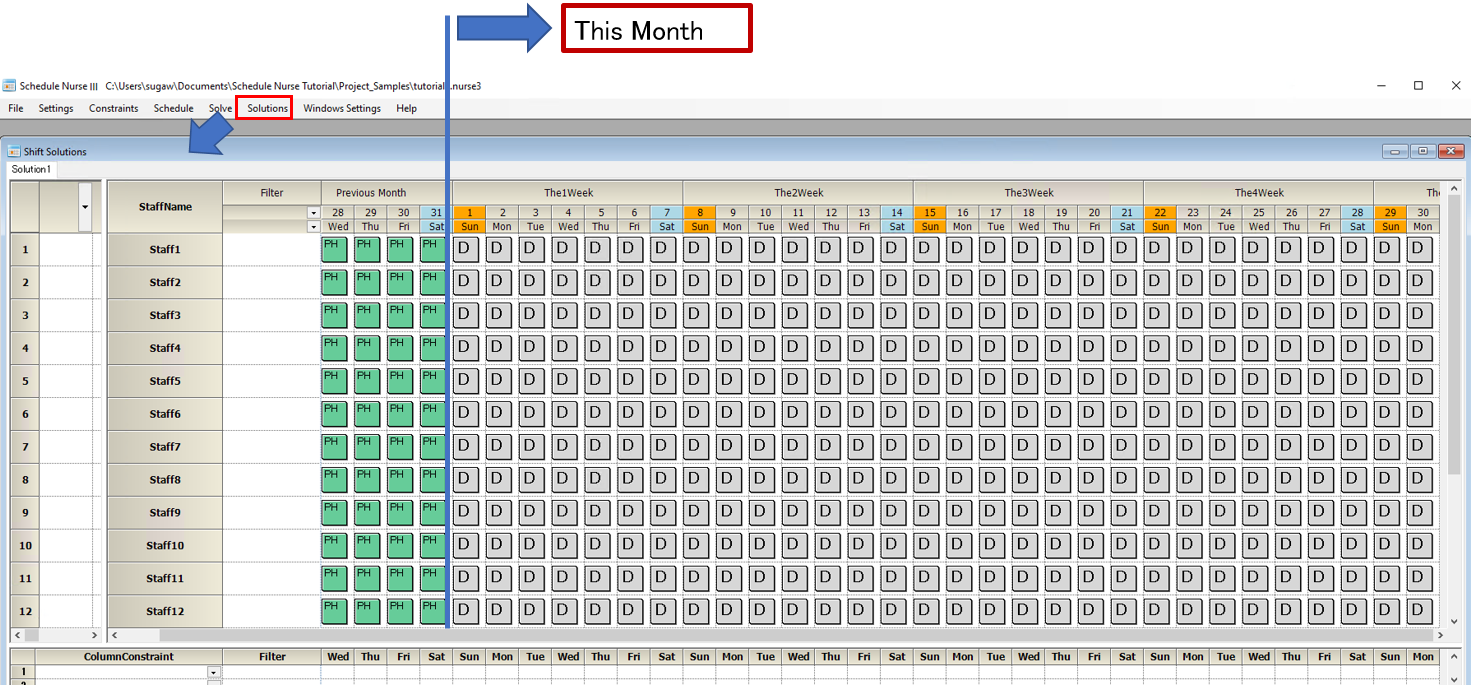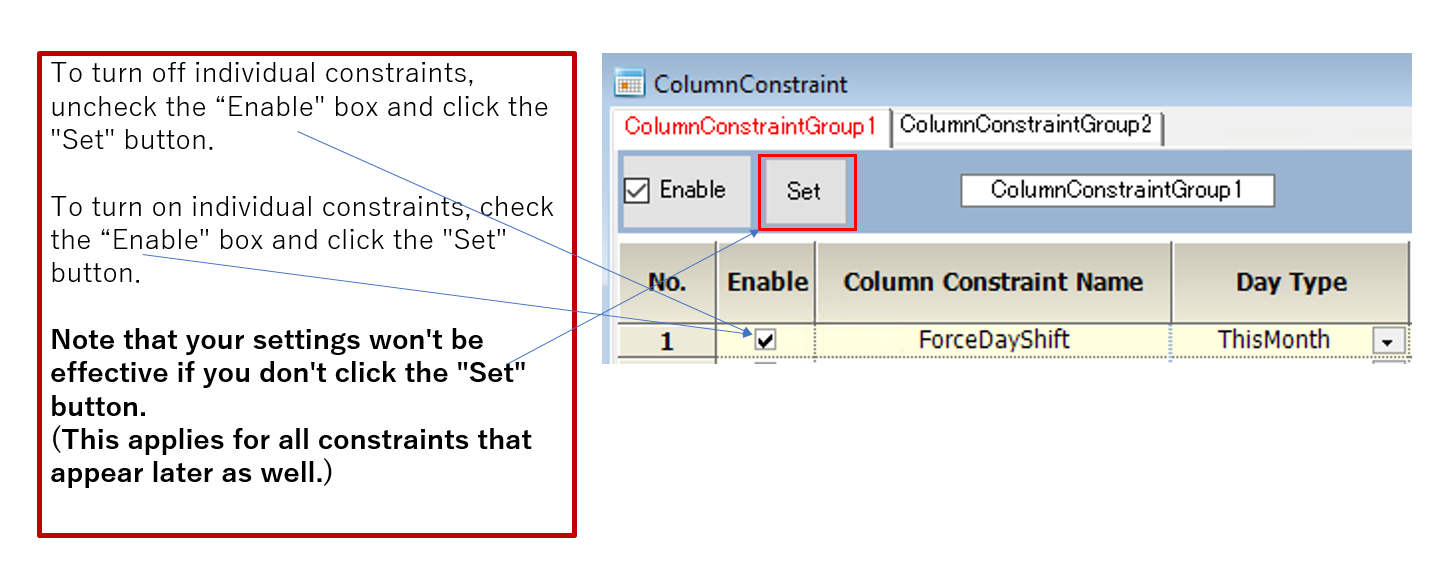There is only one column constraint here, but you can write multiple-column constraints. The column constraint on this page is named Column Constraint Group 1.
(This can also be an arbitrary name.)
You can also stop the constraint on this forced test by unchecking the group. Let’s try it out. Click “Enable “Again, Solve
, and see how the solution changes.
The following screen shows the solution without the constraint. The screen below just happened to turn out like this, and it might have turned out differently depending on the environment because there is no constraints.

The following screen shows the solution with the column constraint . Note all staff members work “DayShift” this month. However, there was no constraint for previous month, so we cannot predict what will get assigned.


What happens without a constraint?
We cannot predict what will be assigned. In other words, you can’t control it. (Since there is nothing to handle), it would be best if you had some constraints to get things the way you want. This policy is critical, so We will write about it again.
Without constraints, you cannot predict what will be assigned. It will be assigned on its own.

